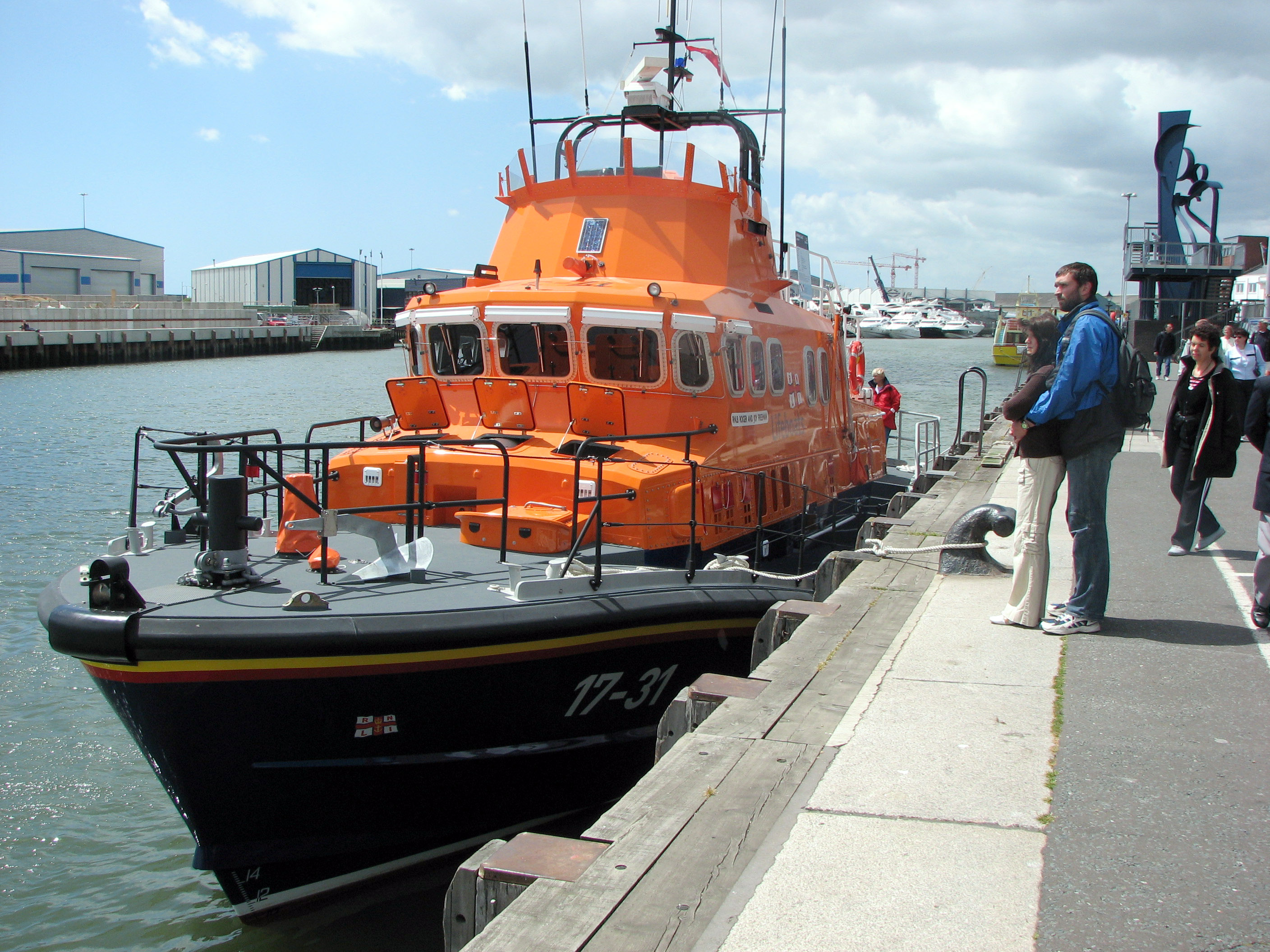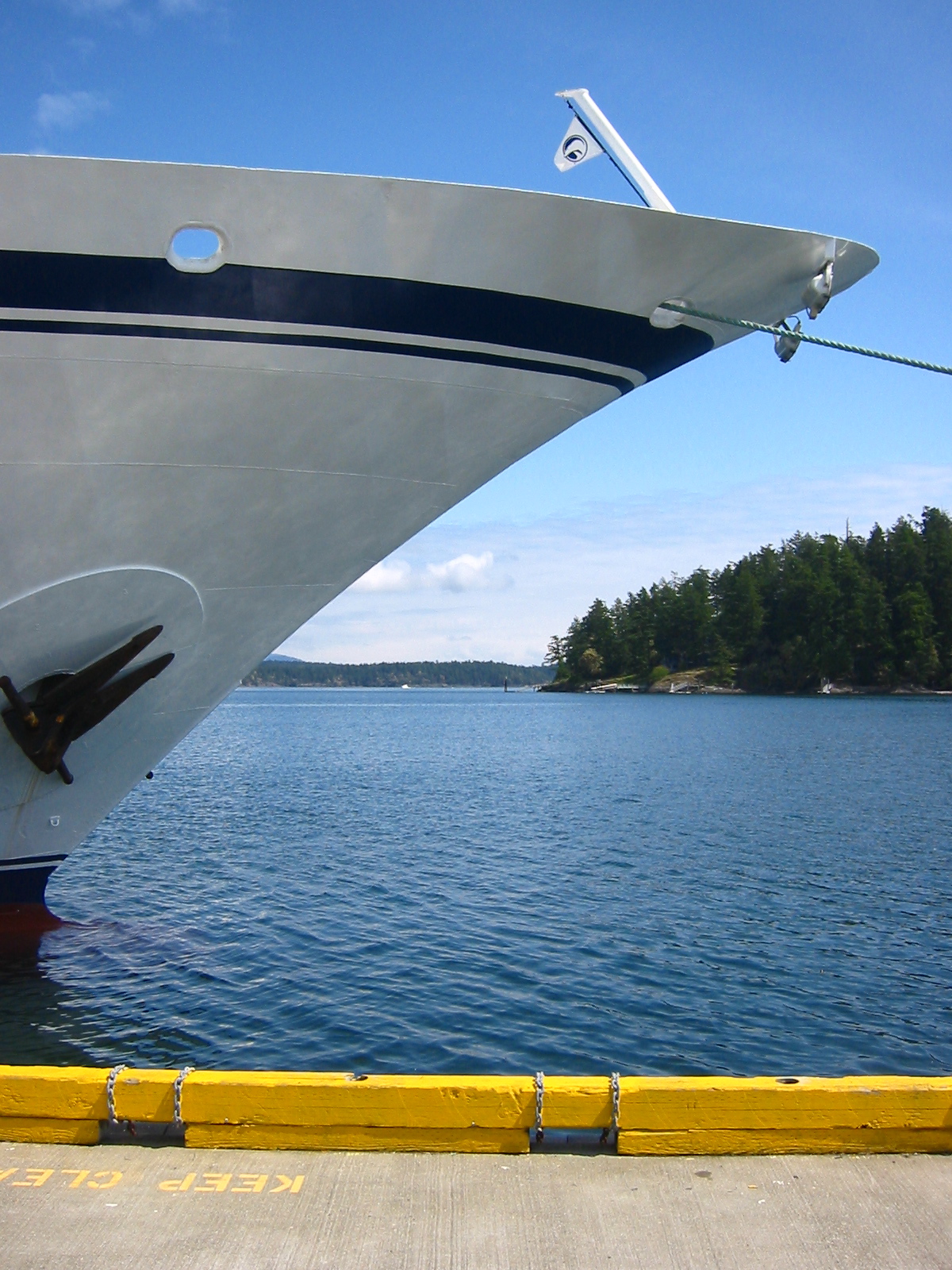Bow (ship) on:
[Wikipedia]
[Google]
[Amazon]
 The bow () is the forward part of the
The bow () is the forward part of the


 A ship's bow should be designed to enable the hull to pass efficiently through the water. Bow shapes vary according to the speed of the boat, the seas or waterways being navigated, and the vessel's function. Where sea conditions are likely to promote pitching, it is useful if the bow provides reserve buoyancy; a flared bow (a raked stem with flared topsides) is ideal to reduce the amount of water shipped over the bow.
Ideally, the bow should reduce the
A ship's bow should be designed to enable the hull to pass efficiently through the water. Bow shapes vary according to the speed of the boat, the seas or waterways being navigated, and the vessel's function. Where sea conditions are likely to promote pitching, it is useful if the bow provides reserve buoyancy; a flared bow (a raked stem with flared topsides) is ideal to reduce the amount of water shipped over the bow.
Ideally, the bow should reduce the
n">''Bow'' n
3at OED
 The bow () is the forward part of the
The bow () is the forward part of the hull
Hull may refer to:
Structures
* Chassis, of an armored fighting vehicle
* Fuselage, of an aircraft
* Hull (botany), the outer covering of seeds
* Hull (watercraft), the body or frame of a ship
* Submarine hull
Mathematics
* Affine hull, in affi ...
of a ship
A ship is a large watercraft that travels the world's oceans and other sufficiently deep waterways, carrying cargo or passengers, or in support of specialized missions, such as defense, research, and fishing. Ships are generally distinguishe ...
or boat
A boat is a watercraft of a large range of types and sizes, but generally smaller than a ship, which is distinguished by its larger size, shape, cargo or passenger capacity, or its ability to carry boats.
Small boats are typically found on i ...
, the point that is usually most forward when the vessel is underway. The aft
"Aft", in nautical terminology, is an adjective or adverb meaning towards the stern (rear) of the ship, aircraft or spacecraft, when the frame of reference is within the ship, headed at the fore. For example, "Able Seaman Smith; lie aft!" or "Wh ...
end of the boat is the stern.
Prow may be used as a synonym for bow or it may mean the forward-most part of the bow above the waterline.
Function


 A ship's bow should be designed to enable the hull to pass efficiently through the water. Bow shapes vary according to the speed of the boat, the seas or waterways being navigated, and the vessel's function. Where sea conditions are likely to promote pitching, it is useful if the bow provides reserve buoyancy; a flared bow (a raked stem with flared topsides) is ideal to reduce the amount of water shipped over the bow.
Ideally, the bow should reduce the
A ship's bow should be designed to enable the hull to pass efficiently through the water. Bow shapes vary according to the speed of the boat, the seas or waterways being navigated, and the vessel's function. Where sea conditions are likely to promote pitching, it is useful if the bow provides reserve buoyancy; a flared bow (a raked stem with flared topsides) is ideal to reduce the amount of water shipped over the bow.
Ideally, the bow should reduce the resistance
Resistance may refer to:
Arts, entertainment, and media Comics
* Either of two similarly named but otherwise unrelated comic book series, both published by Wildstorm:
** ''Resistance'' (comics), based on the video game of the same title
** ''T ...
and should be tall enough to prevent water from regularly washing over the top of it. Large commercial barges on inland waterways rarely meet big waves and may have remarkably little freeboard at the bow, whereas fast military vessels operating offshore must be able to cope with heavy seas. On slower ships like tankers and barges, a fuller bow shape is used to maximise the volume of the ship for a given length. The bow may be reinforced to serve as an ice-breaker.
The forward part of the bow is called the "stem" or "forestem". Traditionally, the stem was a timber (or metal) post into which side planks (or plates) were joined. Some boats such as the Dutch barge "aak" or the clinker-built Viking
Vikings ; non, víkingr is the modern name given to seafaring people originally from Scandinavia (present-day Denmark, Norway and Sweden),
who from the late 8th to the late 11th centuries raided, pirated, traded and s ...
longship
Longships were a type of specialised Scandinavian warships that have a long history in Scandinavia, with their existence being archaeologically proven and documented from at least the fourth century BC. Originally invented and used by the Nors ...
s have no straight stem, having instead a curved prow.
Types
Several types of bows exist. These include:Etymology
FromMiddle Dutch
Middle Dutch is a collective name for a number of closely related West Germanic dialects whose ancestor was Old Dutch. It was spoken and written between 1150 and 1500. Until the advent of Modern Dutch after 1500 or c. 1550, there was no overarch ...
''boech'' or Old Norse
Old Norse, Old Nordic, or Old Scandinavian, is a stage of development of North Germanic languages, North Germanic dialects before their final divergence into separate Nordic languages. Old Norse was spoken by inhabitants of Scandinavia and t ...
''bógr'' (shoulder). Thus it has the same origin as the English "bough" (from the Old English ''bóg'', or ''bóh'', (shoulder, the bough of a tree) but the nautical term is unrelated, being unknown in this sense in English before 1600.3at OED
Prow
The "prow" (French : ''proue'') is the forward-most part of a ship's bow above the waterline. The terms ''prow'' and "bow" are often used interchangeably to describe the most forward part of a ship and its surrounding parts.See also
*Boat building *Bow (rowing) *Deck (ship), Deck *Figurehead (object), Figurehead *Glossary of nautical terms *Naval architecture *Port (nautical), Port *Prow *Shipbuilding *Starboard * Stem (ship) * SuperstructureReferences
Further reading
*Sleight, Steve; The New Complete Sailing Manual, Dorling Kindersley Co., (2005) *Steward, Robert; Boatbuilding Manual, 3rd ed. International Marine Publishing Company. Camden, Maine (1987), p2-3. {{Authority control Watercraft components